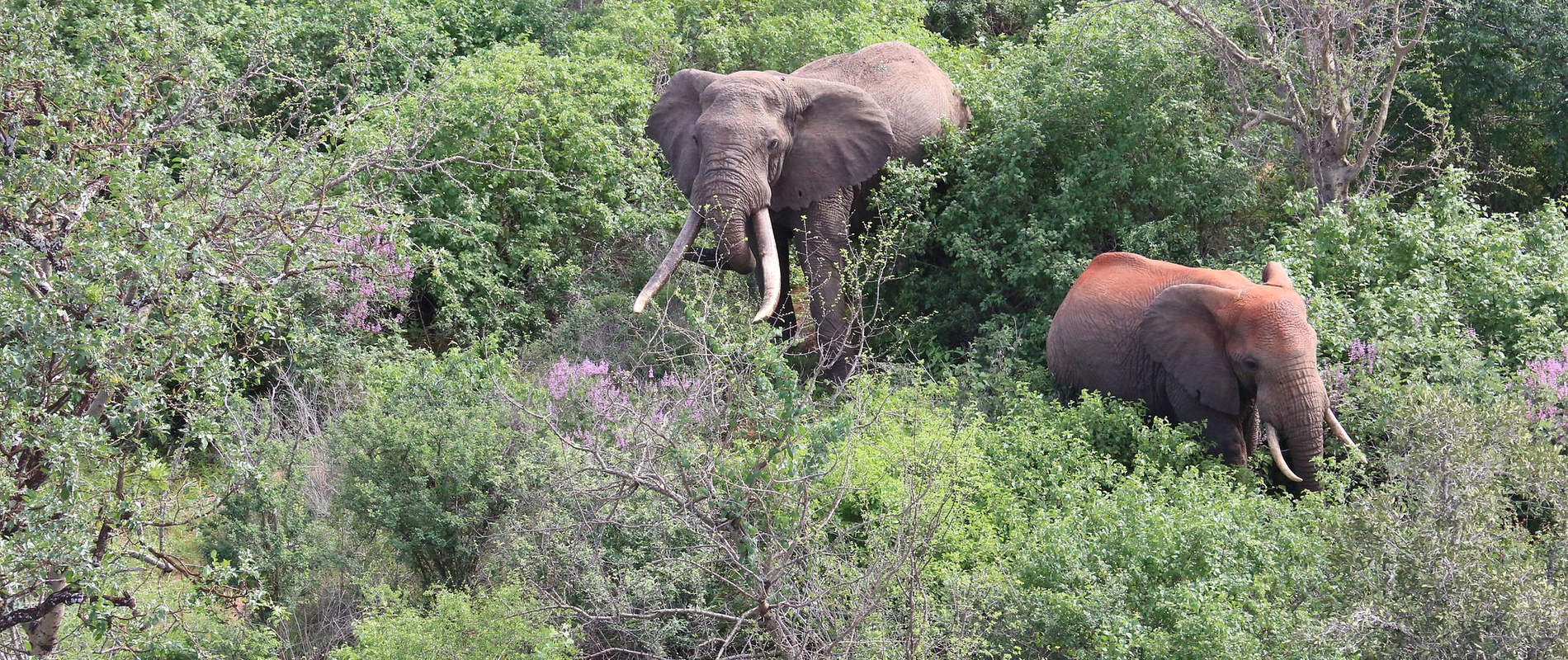With some isolated rains in May, parts of Tsavo West, as well as the north western and south-eastern areas of Tsavo East grew lusher
With some isolated rains in May, parts of Tsavo West, as well as the north western and south-eastern areas of Tsavo East grew lusher. Yet despite there being areas outside of the Park that also received rain, large numbers of cattle continue to force their way into the Park to graze on the small amount of greenery afforded by the rains. Tsavo West especially was inundated with cattle from all sides, but especially in the south.
In last month’s report, it was noted that we launched the Trust’s new Airbus A350 helicopter in Tsavo, and it has since had a busy and eventful first month. Amongst routine aerial surveillance patrols the A350 was deployed to help with human wildlife conflict and removed several problem elephants off farmland pushing them back into the Park. With an increased number of human-wildlife conflict cases in the TCA the A350 is already proving to be highly efficient in resolving such cases, which protects both elephants and communities.
One of the A350’s first real tests was a search for three of the Trust’s elephant orphans, which had suddenly become separated from the orphan herd in Ithumba as they were out on their daily walks in the bush. These three orphans had been translocated from the Nairobi Nursery to the Ithumba Reintegration Unit only 5 days before they went missing, having been moved for their eventual transition back into the wild. An immediate search was instigated by the Keepers and the ground teams but their tracks had been obscured by the tracks of other wild elephants so the keepers could not be certain which direction they had gone. The helicopter as well as the fixed wing aircraft assisted in the search, but ultimately these tiny elephants had disappeared under the incredibly thick vegetation brought on by the recent rains. The search continues with both the fixed wing aircraft and the helicopter, and we have got word out to all the KWS rangers and the communities alike for any reported sightings to be relayed back to DSWT so that we can respond. The area has abundant waterholes, food and wild elephants, so these orphans could well have joined up with a wild herd, making the task of recovering them more challenging.
Throughout the rest of May, the Aerial Unit continued to dedicate time to routine patrols throughout the Tsavo Conservation Area, keeping up a consistent security presence and checking that all was well in the Parks. Only one elephant carcass was discovered during the month, with its tusks intact, and other than that, the only signs of poaching detected from the air was one shooting blind next to a waterhole, which is hugely promising.
Several flights were also conducted in the Gazi area, which was once a hotbed of charcoal burning activity, but has been a major area of focus for the DSWT air and ground teams in the last year. As a result, in the last few months, activity has almost ceased completely, and in May only one charcoal kiln was discovered.
Highlights for the DSWT’s aerial team in May included rhino sightings and a new-born giraffe, still covered in amniotic fluid, whilst it is always a pleasure to see Tsavo green and lush with plenty of full waterholes to quench the thirst of the area’s wild denizens.
